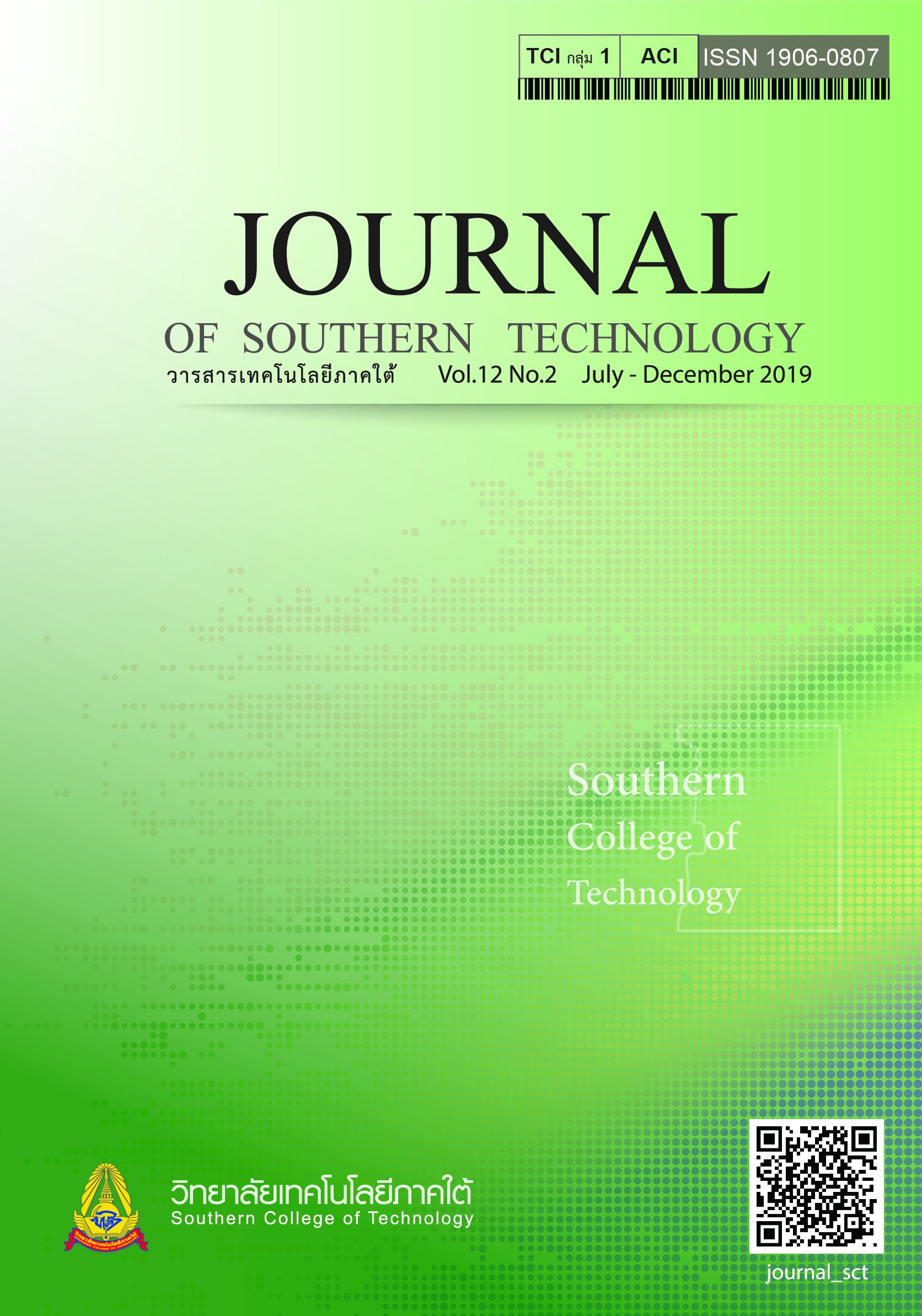Tourism for (Quality of) Life
Main Article Content
Abstract
Tourism is a travel to and stay in places outside their normal place of residence, which willing to Tourism is a travel to and stay in places outside their normal place of residence, which willing to travel for leisure and not related to other business purposes. No matter what kind of tourism, if tourists satisfy with their journey, it will initiate their positive quality of life. Life satisfaction or overall life happiness can be broadly mean the good quality of life or subject well-being. The individual well-being and positive life satisfaction would lead to good quality of life. This paper attempts to bring the meaning underline the purpose of tourism, which is Quality of Life (QOL), into the spotlight. QOL can be studied at all levels from individual to national level, which can be categorized into 2 groups namely: 1) objective QOL, which can be used as an economic indicators (for example; household income, cost of living, health etc.) and 2) subject QOL, which can be used as social indicators (for example; life satisfaction, happiness, subject well-being, quality of life etc.) Quality of life is an outcome from the integrating of physical, mind and spiritual. Using the quality of life theory of leisure travel satisfaction appended with well-being theory and satisfaction theory and also expectancy confirmation theory, norms theories, equity theory and self-congruity theory would be beneficial to tourism industry in terms of tourist loyalty, repeat patronage and word-of-mouth. This paper also discussed about the relationship of 8 QOL domains in area of tourism to create the innovative tourism model. The objective of this manuscript was to present an opinion of tourism in terms of understanding relationships and impact on QOL as well as holistic life. Tourism for all is the key to build up the quality of life and the better life. Tourism industry focuses on serving all the tourist’s desires emphasize on creating products and services for life up the quality of life. It can be said that tourism like elixir. Travel generates the leisure and relaxation; reduce stress, peace of mind and happiness. Positive life satisfaction would lead to overall good quality of life which genuinely consistent with the concept of tourism for (quality of) life.
Article Details
-
Authors must agree to the journal publication rules and allow the editors to edit the manuscripts for publication.
-
Author’s right belongs to the author but Journal of Southern Technology holds the right of first publication and thus allow readers to use the article for the purpose of education but not commercial.
References
Cummins, R.A. (1997). The Comprehensive Quality of Life Scale-Adult (Com QOL-A5). (5th ed.). Melbourne: School of Psychology, Deakin University.
Dunn, H. L. (1959). High-level wellness for man and society. American Journal of Public Health (Nations Health), 49(6), 786-792.
Filep, S. (2014). Moving beyond subjective well-being: A tourism critique. Journal of Hospitality Tourism Research, 38, 266-274.
Flanagan, J.C. (1978). A research approach to improving our quality of life. American Psychologist, 33, 138-147.
Future Foundation. (2007). Future Foundation. Retrieved April 20, 2019, from https://www.futurefoundation.org
Hunthayung, C., & Panthong, K. (2019). A comparison of concurrent validity and divergent validity happiness scale of PERMA theory. Journal of Southern Technology, 12(1), 67-75.
Komchadluek. (2017). รัฐมนตรีว่าการกระทรวงการท่องเที่ยวและกีฬา รับนักท่องเที่ยวคนที่ 35 ล้าน ที่สุวรรณภูมิ. Retrieve December 29, 2018, from https://www.komchadluek.net/ news/regional/307533
Krupinski, J. (1980). Health and quality of life. Social Science and Medicine, 14A, 203-211.
Layard, R. (2006). Happiness: Lessons from a New Science. Oxford: Penguin.
Liang, J., Yamashita, T., & Brown, J.S. (2013). Leisure Satisfaction and quality of life in China, Japan and South Korea: a comparative study using Asia Barometer 2006. Journal of Happiness Studies, 14 (3), 753-769.
Lyubonirsky, S., & Leppper, H.S. (1999). A measure of subjective happiness: Preliminary reliability and construct validation. Social Indicators Research, 46, 137-155.
Mc.Cabe, S., & Johnson, S. (2013). The happiness factor in tourism: subjective well-being and social tourism. Annals of Tourism Research, 41, 42-65.
Müller, H., & Kaufmann, E.L. (2001). Wellness tourism: Market analysis of a special health tourism segment and implications for the hotel industry. Journal of Vacation Marketing, 7(1), 5-17.
Matichon. (2019). นักเดินทางต้องรู้! 3 เทรนด์มาแรง ท่องเที่ยว 2019 และ เมืองยอดฮิตประจำปี. Retrieve January 7, 2019, from https://www.matichon.co.th/lifestyle/news_1306213
National Wellness Institute. (2007). Retrieved April 20, 2019, from https://www. nationalwellness.org
Neal, J.D., Sirgy, M.J., & Uysal, M. (1999). The role of satisfaction with leisure travel/tourism services and expenditure in satisfaction with leisure life and quarrel life. Journal of Business Research, 44, 153-163.
New Ecomics Foundation. (NEF). (2004). Retrieved November 5, 2007, from NEF web site: https:// www.wekkveubgnabufesti. net/uk_manifesto.pdf
Nonsiri, P., & Narongrit, C. (2018). The key success factors of collaborative network for enhancing green tourism in Khao Kho District, Phetchaboon Province. Journal of Southern Technology, 11(2), 15-26.
Puczkó, L., & Smith, M. (2012). An Analysis of Tourism QOL Domains from the Demand Side. In M. Uysal, R. R. Perdue, & J. M. Sirgy (Eds.), The Handbook of Tourism and Quality of Life Research (pp.263-278). Dordrecht: Springer.
Rahman, T., Mittelhammer, R. C., & Wandschneider, P. (2005). Measuring the Quality of life Across Countries. A sensitivity Analysis of Well-Being Indeces. (Research Paper No. 2005/06). Helsinki: World Institute for Development Economies Research (WIDER) established by United Nation University (UNU).
Sirgy, M. J. (2010). Toward a quality of life theory of leisure travel satisfaction. Journal of Travel Research, 49(2), 246-260.
Seligman, M.E.P. (2011). Flourishing: A Visionary New Understanding of Happiness and Well-being (1st Free Press Hardcover ed.). New York: Free Press.
The Global Wellness Institute. (2017). Empowering Wellness Worldwide. Global Wellness Economy Monitor-January 2017. Retrieved July 20, 2017 from https: llwww.globalwellnessinstitute.org/industry-research/
Veenhoven, R. (2002). Why social policy needs subjective indicators. Social Indicators Research, 58, 33-45.
World Tourism Organization. (2015). UNWTO Annual Report 2014. Madrid.
Waldinger, R. (2015). What makes a good life? Lessons from the longest study on happiness. Retrieve December 29, 2018, from https://www.ted.com/talks/robert_waldinger_what_makes_a_good_life_lessons_from_the_longest_study_on_happiness

